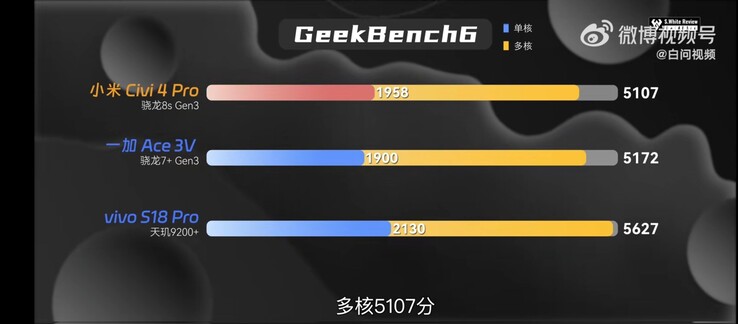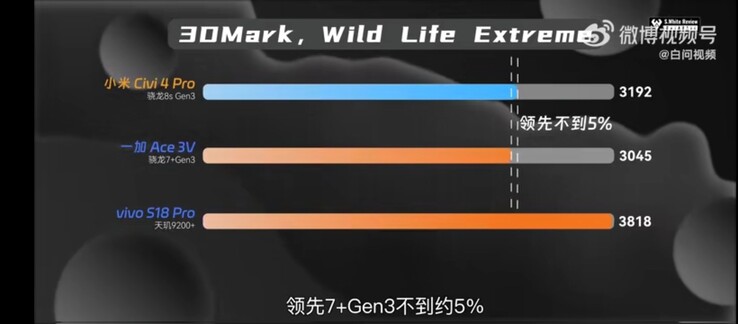Snapdragon 8s Gen 3 vs Snapdragon 7+ Gen 3: As close as it gets to flagship performance
After launching the Snapdragon 8 Gen 3 as its flagship chipset for this generation, Qualcomm has gone on to release two sub-premium chipsets—the Snapdragon 8s Gen 3 and Snapdragon 7+ Gen 3. Both SoCs are similarly positioned and are expected to be widely adopted, but what’s the performance differential between them?
Kicking off with Geekbench, the Snapdragon 8s Gen 3 on the Xiaomi Civi 4 Pro records a single-core score of 1,958 and a multi-core score of 5,107. For the Snapdragon 7+ Gen 3 on the OnePlus Ace 3V, those numbers are 1,900 and 5,172 respectively, even going as high as over 5300 in some tests. On AnTuTu’s CPU test, however, the Snapdragon 8s Gen 3 scores 376,316, versus the Snapdragon 7+ Gen 3’s 374,329.
Evidently, both chips deliver identical CPU performance, with the Snapdragon 8s Gen 3 having a barely perceptible single-core advantage, likely thanks to its higher-clocked Cortex-X4 prime core (3.0 GHz vs the Snapdragon 7+ Gen 3’s 2.8 GHz).
Things change slightly on the GPU end, however. The Xiaomi Civi 4 Pro and Snapdragon 8s Gen 3 partnership comes away with a 3,192 score on 3DMark’s Wild Life Extreme test. The Snapdragon 7+ Gen 3 on the OnePlus Ace 3V scores a healthy 3,045, indicating about a 5% inferiority. It’s similar on AnTuTu, too, where the Snapdragon 8s Gen 3 scores 496,235, compared to the Snapdragon 7+ Gen 3’s 490,115.
In conclusion, the Snapdragon 8s Gen 3 and Snapdragon 7+ Gen 3 are two peas in a pod and offer identical performance across the board. Admittedly, the Snapdragon 8s Gen 3 does outperform its rival, but not in any meaningful way. Compared to the Snapdragon 8 Gen 3, the Snapdragon 8s Gen 3 is about 30% and 12% weaker on the GPU and CPU ends respectively. Compared to last year’s Snapdragon 8 Gen 2, though, the Snapdragon 8s Gen 3 is every bit as powerful on the CPU side, and just about 7% weaker on the GPU end.



